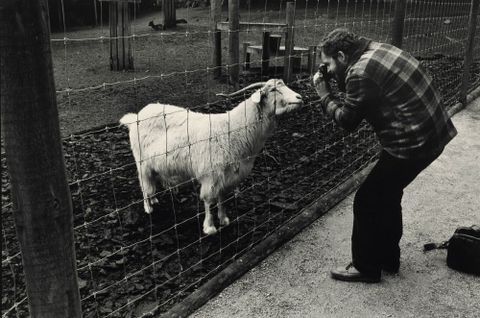Te Papa’s collections have been built over nearly 150 years and range from miniscule lice and molluscs through to caravans, 22m long artworks and colossal squid. The collection is estimated to be approximately 2 million artworks, photographs, objects and specimens.
Headaches
A collection this diverse can create a number of headaches when it comes to digitisation. Some objects require specialist imaging techniques. Some objects may require conservation or stabilisation first. Some objects are too large and may need to wait until the object is installed in an exhibition. Some of our collections are not yet catalogued in digital form at all, so before we can image these, we must catalogue them. And of course like most heritage institutions, we have finite resources in terms of people power, space, technology, time and… money.
Rights
Victoria has already written briefly about some of the rights clearance work that goes on helping us provide access to the collections online. Sometimes we have images for things we don’t have rights clearances for; sometimes we have rights clearances for objects not imaged. Sometimes we have permission from an artist or estate for one work, but not others. We try to align our digitisation projects with rights clearances, but the overlap doesn’t always happen straight away.
Information
Digitisation is also more than just digital photographs. We also think catalogue information, even without an image, is useful for many people, and can answer simple questions such as “how many works by artist X do you have?”. So, we are also spending time upgrading our catalogue records to make them findable and useful.
Drivers
In the past our main drivers for digitisation have been objects going on exhibition, those needed for publications or images ordered through the Picture Library. Over recent years, Collections Online has changed the way many people access our collections, and so our digitisation priorities and procedures have changed too.
We are identifying groups of objects across the collections that are suitable for imaging, and have also begun spreading the workload across the organisation. The selection of these groupings varies from collection to collection, but usually we target significant sub-collections; or a group of objects that we have the technology and space to image now. Usually, “inventory” work is conducted at the same time, so we can improve our information and reduce the need for additional handling of objects.
We have also been trialling some upcoming tools from DigitalNZ around digitisation selection and hope these will help us and other institutions with the future prioritisation. Watch this space.
Imaging
Our small imaging team work to the highest standards and with all collections (click on the image to zoom at these links James Bragge, Monrad collection, korowai).
Recently our curators and collection managers have begun imaging and have done some great work in areas across the collections such as international history, pounamu, pacific cultures and ceramics.
Our specialist Natural Environment imaging team uses techniques such as automontage for extended depth-of-field photography to image the minute specimens in the collection. This process is time consuming but offers a view of the specimens not previously possible. It can also make some quite striking images. Other imaging techniques such as Scanning Electron Microscope are sometimes required. Currently this team is concentrating on imaging type specimens and the Botany team have done great work imaging specimens collected by Banks and Solander on Cook’s first voyage.
Always more to do
We’ve been able to add around 10000 more images to Collections Online over the last 12 months, taking the total to 40000 images. There’s still a long way to go, and some collections are better represented than others. However, judging by the visitation to Collections Online and the feedback we are getting through the site and Twitter, many of you out there are enjoying and appreciating this new access to the collections.





Lookin forward to Kaumātua Kapahaka at Te Papa 12 Jul 2009
Great post!